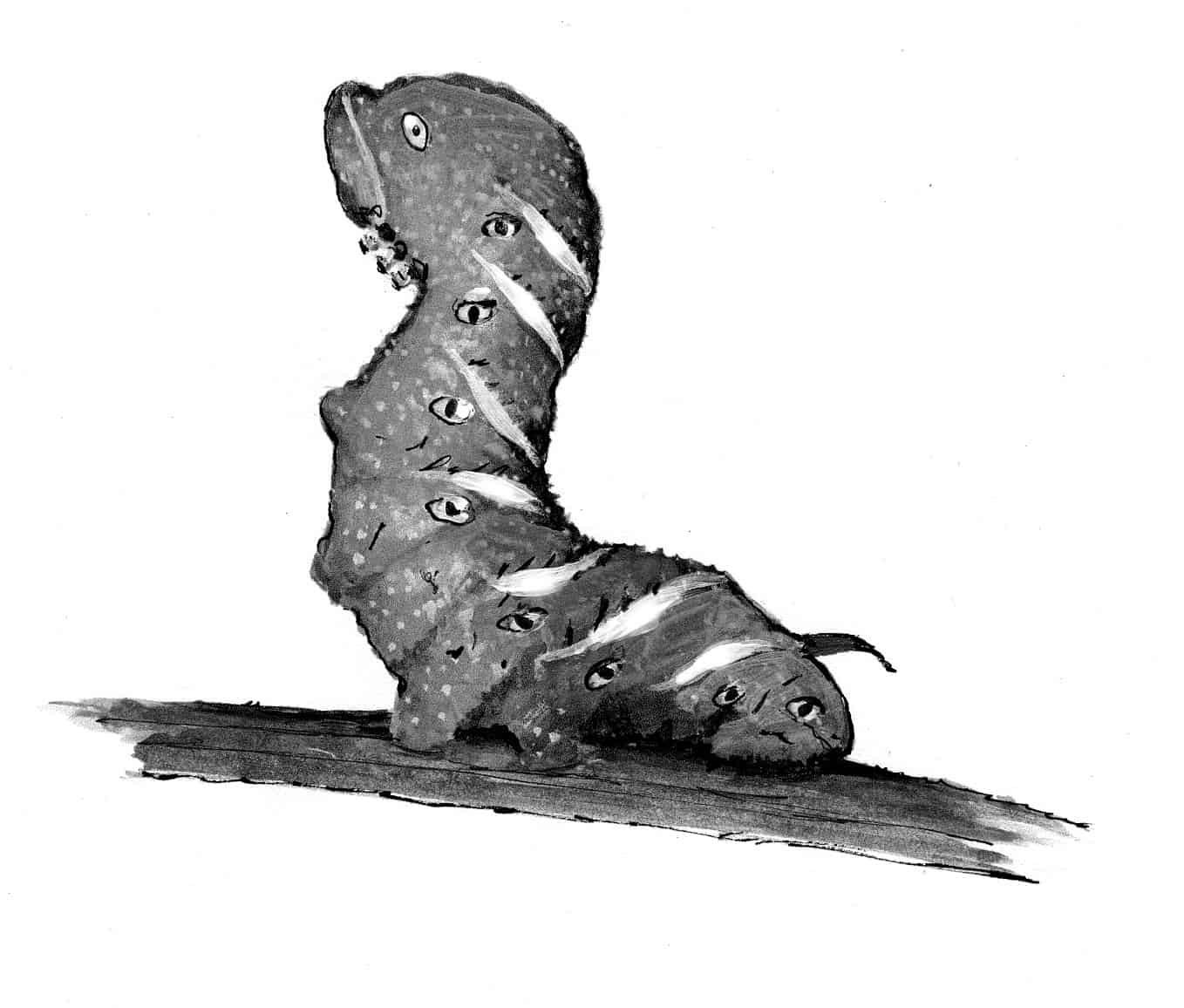By Todd McLeish
The big, meaty green caterpillars that many of us have been fighting to eradicate from our gardens this summer make plenty of people squirm. In part it’s because they are among the largest caterpillars in the region, sometimes reaching close to three inches in length, with reddish horns on their ends that look like stingers (but aren’t). They also have voracious appetites and a preference for consuming our tomato, potato, eggplant and pepper plants.
Despite their alien appearance, tobacco hornworms are native insects that contribute to local food chains and eventually transform into beautiful Carolina sphinx moths. These large-bodied moths have five-inch, coffee-colored wings that enable them to hover over flowers like hummingbirds. According to Sam Jaffe, founder of The Caterpillar Lab in Keene, N.H., Carolina sphinx moths have the longest proboscis of any insect in New England, which allows them to probe the deepest flowers.
“They’re very impressive and long-lived, and they almost give off the impression of being mammal-like – fluffy and hairy with large eyes that reflect red in the light,” said Jaffe. “They’re special in a lot of ways.”
The caterpillars exhibit some pretty special behaviors, too. After hatching from tiny eggs on the underside of leaves, the green caterpillars, decorated with diagonal white lines, go through the typical five moth stages of growth, called instars. By the time they reach their fifth instar, they can become quite bold, occasionally rearing up on their hind legs when disturbed and thrashing their heads back and forth. Jaffe calls the behavior “regal,” though he admits that he would have trouble convincing tomato farmers of that.
He would have even more trouble if he pointed out that tobacco hornworms may even try to nip your finger, though their mandibles aren’t strong enough to break your skin. Those mandibles also produce a clicking sound that is believed to serve as a warning to predators. Another deterrence tactic: they will also often regurgitate when threatened.
When the caterpillars have matured and finished feeding, approximately a month after hatching, they drop to the ground and dig an underground chamber in which to pupate. In our region, there are typically two generations of caterpillars in a summer. The second batch remains in the ground as pupae through the winter months, and moths emerge in the spring.
From an ecological perspective, tobacco hornworms play numerous roles. When they’re still tiny, they serve as food for a wide variety of birds. Once they mature, even scavenging mammals will seek them out as a source of protein. Other insects eat them as well, including stinkbugs and assassin bugs, which insert their uniquely-adapted mouthparts into the caterpillars and suck them dry.
And then there are the parasitic wasps. One variety injects its eggs inside hornworm eggs; the wasp larvae hatch, feed on the eggs and emerge as adult wasps. Another wasp lays its eggs in the caterpillar, and when the wasp larvae emerge, they eat their way out of the hornworm and spin cocoons on top of its skin. The infected hornworm carries the cocoons around, and eventually dies.
So if you’re in the garden and see a hornworm covered in tiny white cocoons, you’re witnessing one of the ways in which nature keeps the caterpillar population under control.
Jaffe also noted that tobacco hornworms are “great guest caterpillars” that are fun to observe and easy to rear. He said farm camps and schools with gardens can easily incorporate them into educational programs.
Just don’t confuse them with the very similar tomato hornworm, which has a straight blue horn rather than a curved red horn. Tomato hornworms have mostly disappeared from the Northeast, but if you do see one, try to resist squishing it, and let this uncommon insect complete its life cycle.
While you can’t be faulted for removing hornworms from your crops, Jaffe hopes you will try viewing them through his eyes. If you do, you’ll see an important part of our natural heritage. Caterpillars, even destructive ones in the garden, are fascinating insects that are fun for kids to observe, and can help to inspire a lifelong interest in nature.
Todd McLeish is an author and natural history writer. His most recent book is entitled, Norwhals: Arctic Whales in a Melting World. The illustration for this column was drawn by Adelaide Tyrol. The Outside Story is assigned and edited by Northern Woodlands magazine: northernwoodlands.org, and sponsored by the Wellborn Ecology Fund of New Hampshire Charitable Foundation: [email protected]
Tobacco Hornworms: big, green, and in the garden




